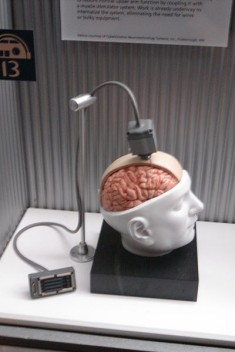What does education have in common with a pilotless submarine and remote-controlled insects?
In short, the letters ARPA. Stay with us for a moment — because we’re going to need your help.
 In 1953, Congress created DARPA — the Defense Advanced Research Projects Agency — to catch up with a Soviet Union that could turn innovation into workable defense projects faster than the United States could. It was idea-heavy and bureaucracy-light, freed from the military’s normal R&D processes, and give us everything from the ability to detect nuclear tests in other countries to ARPANET, which ultimately became the Internet (with apologies to Al Gore). More recently, they’ve taken on projects that just sound too cool to be true, from a flying armored car to a “silent talk” system that allows soldiers to translate their brain waves into radio communication… to say nothing of that drone submarine. DARPA, which in some ways resembled the famous Skunk Works at Northrop Grumman, has also spun off similar innovation hives elsewhere, including ARPA-Energy.
In 1953, Congress created DARPA — the Defense Advanced Research Projects Agency — to catch up with a Soviet Union that could turn innovation into workable defense projects faster than the United States could. It was idea-heavy and bureaucracy-light, freed from the military’s normal R&D processes, and give us everything from the ability to detect nuclear tests in other countries to ARPANET, which ultimately became the Internet (with apologies to Al Gore). More recently, they’ve taken on projects that just sound too cool to be true, from a flying armored car to a “silent talk” system that allows soldiers to translate their brain waves into radio communication… to say nothing of that drone submarine. DARPA, which in some ways resembled the famous Skunk Works at Northrop Grumman, has also spun off similar innovation hives elsewhere, including ARPA-Energy.
And now, education.
Earlier this year, the federal government unveiled plans for an ARPA in education — a structure similarly protected from bureaucracy, with the power to speed up innovation in education. As a Department of Education White paper notes, an ARPA-ED would have the potential to shake up a structure of education that hasn’t changed notably in decades, and would help to correct the national underinvestment in education innovation that we’ve been grumbling about for years.
Next week, Colorado Sen. Michael Bennet will introduce a formal proposal to make ARPA-ED a reality. Please support it, by writing your own representatives (contact info available here and here), or by sending your name, organization and title to our policy director, Ben Riley, to be added to our own letter of support.